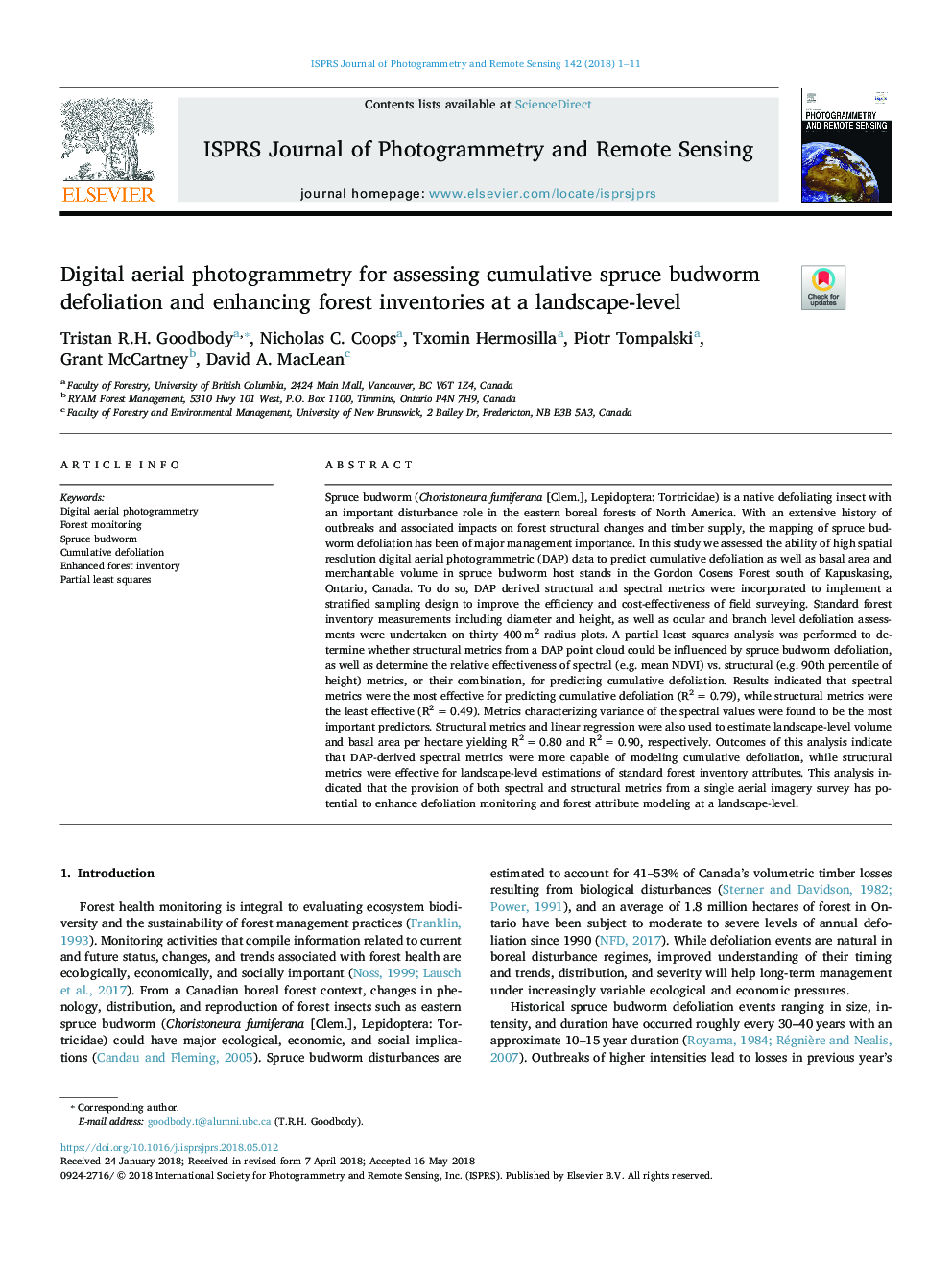| کد مقاله | کد نشریه | سال انتشار | مقاله انگلیسی | نسخه تمام متن |
|---|---|---|---|---|
| 6949070 | 1451232 | 2018 | 11 صفحه PDF | دانلود رایگان |
عنوان انگلیسی مقاله ISI
Digital aerial photogrammetry for assessing cumulative spruce budworm defoliation and enhancing forest inventories at a landscape-level
ترجمه فارسی عنوان
فوتوگرافی سنجی هوایی دیجیتال برای ارزیابی تجمع گوشت خوک درختکاری و افزایش موجودی جنگل در سطح چشم انداز
دانلود مقاله + سفارش ترجمه
دانلود مقاله ISI انگلیسی
رایگان برای ایرانیان
کلمات کلیدی
فوتوگرافی دیجیتال هوایی، نظارت بر جنگل، صنوبر صنوبر، تبخیر انباشته، موجودی جنگل پیشرفته، حداقل مربعات جزئی،
موضوعات مرتبط
مهندسی و علوم پایه
مهندسی کامپیوتر
سیستم های اطلاعاتی
چکیده انگلیسی
Spruce budworm (Choristoneura fumiferana [Clem.], Lepidoptera: Tortricidae) is a native defoliating insect with an important disturbance role in the eastern boreal forests of North America. With an extensive history of outbreaks and associated impacts on forest structural changes and timber supply, the mapping of spruce budworm defoliation has been of major management importance. In this study we assessed the ability of high spatial resolution digital aerial photogrammetric (DAP) data to predict cumulative defoliation as well as basal area and merchantable volume in spruce budworm host stands in the Gordon Cosens Forest south of Kapuskasing, Ontario, Canada. To do so, DAP derived structural and spectral metrics were incorporated to implement a stratified sampling design to improve the efficiency and cost-effectiveness of field surveying. Standard forest inventory measurements including diameter and height, as well as ocular and branch level defoliation assessments were undertaken on thirty 400â¯m2 radius plots. A partial least squares analysis was performed to determine whether structural metrics from a DAP point cloud could be influenced by spruce budworm defoliation, as well as determine the relative effectiveness of spectral (e.g. mean NDVI) vs. structural (e.g. 90th percentile of height) metrics, or their combination, for predicting cumulative defoliation. Results indicated that spectral metrics were the most effective for predicting cumulative defoliation (R2â¯=â¯0.79), while structural metrics were the least effective (R2â¯=â¯0.49). Metrics characterizing variance of the spectral values were found to be the most important predictors. Structural metrics and linear regression were also used to estimate landscape-level volume and basal area per hectare yielding R2â¯=â¯0.80 and R2â¯=â¯0.90, respectively. Outcomes of this analysis indicate that DAP-derived spectral metrics were more capable of modeling cumulative defoliation, while structural metrics were effective for landscape-level estimations of standard forest inventory attributes. This analysis indicated that the provision of both spectral and structural metrics from a single aerial imagery survey has potential to enhance defoliation monitoring and forest attribute modeling at a landscape-level.
ناشر
Database: Elsevier - ScienceDirect (ساینس دایرکت)
Journal: ISPRS Journal of Photogrammetry and Remote Sensing - Volume 142, August 2018, Pages 1-11
Journal: ISPRS Journal of Photogrammetry and Remote Sensing - Volume 142, August 2018, Pages 1-11
نویسندگان
Tristan R.H. Goodbody, Nicholas C. Coops, Txomin Hermosilla, Piotr Tompalski, Grant McCartney, David A. MacLean,
